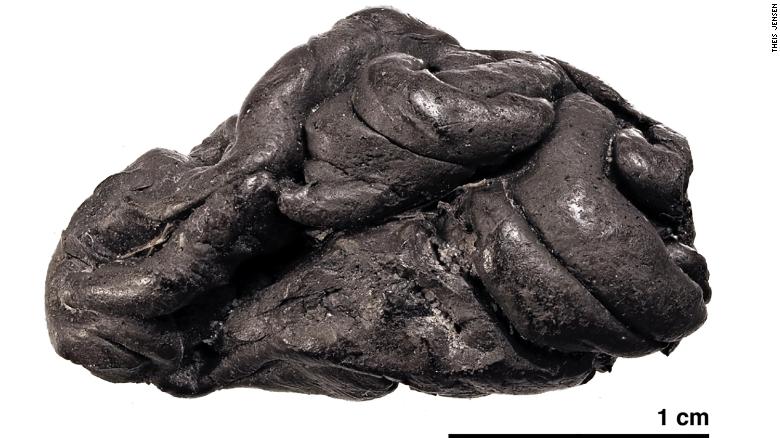Ancient History
Ancient Chewing Gum Holds Clues to Life of Young Girl Who Lived 5,700 Years Ago
Meet Lola, a young girl who lived in Denmark 5,700 years ago. Her last meal included hazelnuts and mallard duck.

(TMU) — We always like to learn more about our ancestors. What they used to eat, how they looked, where did lived, and even some funny or random facts that may help us create a clearer image in our heads. Usually for this kind of information we have to rely on stories told by our grandparents, or if we are even luckier we can use some genealogical book that has our last name in it.
But in this case, scientists managed to decipher the entire genome of a person who lived 5,700 years ago by using birch pitch, a chomped-on piece of resin that used to function like ancient chewing gum.
The “gum” was found while excavating an Early Neolithic site in southern Denmark. Archaeologists came across this ancient chewed piece of birch pitch, covered in well-defined human bite marks, suggesting it had been chewed like gum. This substance was widely used as an adhesive and disinfectant.

Piece of birch pitch from Syltholm, southern Denmark.
Despite the fact that this piece is from more than 5,000 years ago, it was really well preserved, allowing for the team of bioarchaeologists from the University of Copenhagen to extract ancient DNA and sequence the entire genome of the person who once chewed it. These findings were published in the journal Nature Communications.
“It is amazing to have gotten a complete ancient human genome from anything other than bone,’’ lead author Hannes Schroeder, an associate professor from the Globe Institute at the University of Copenhagen, said in a statement.
The person was biologically female and was genetically more closely related to hunter-gatherers from mainland Europe, than to those who lived in central Scandinavia at the time. Scientists also managed to find information on plants and animals whose DNA was also found in it.
We can now meet Lola, a young girl who lived in Denmark 5,700 years ago. Lola had blue eyes, dark skin, and dark hair. Her last meal included hazelnuts and mallard duck. We also have some insight into the different bacteria and viruses Lola dealt with, which were most likely from her oral microbiota.

Artistic reconstruction of “Lola”. Tom Björklund
“Our ancestors lived in a different environment and had a different lifestyle and diet, and it is, therefore, interesting to find out how this is reflected in their microbiome,” said Schroeder.
“What is more, we also retrieved DNA from oral microbes and several important human pathogens, which makes this a very valuable source of ancient DNA, especially for time periods where we have no human remains.”
Lola was lactose-intolerant, which aligns with the idea that adults evolved the tolerance after dairy farming spread during the Neolithic revolution.
The study started with eight birch bark pitch mastic pieces for analysis. After the first screening, the scientists continued working with three of the samples. After that, the samples were processed in the clean room facilities of the Archaeological Research Laboratory at Stockholm University, facilities that are reserved for ancient DNA work.
“It can help us understand how pathogens have evolved and spread over time, and what makes them particularly virulent in a given environment. At the same time, it may help predict how a pathogen will behave in the future, and how it might be contained or eradicated.” Schroeder said.
Typos, corrections and/or news tips? Email us at Contact@TheMindUnleashed.com
